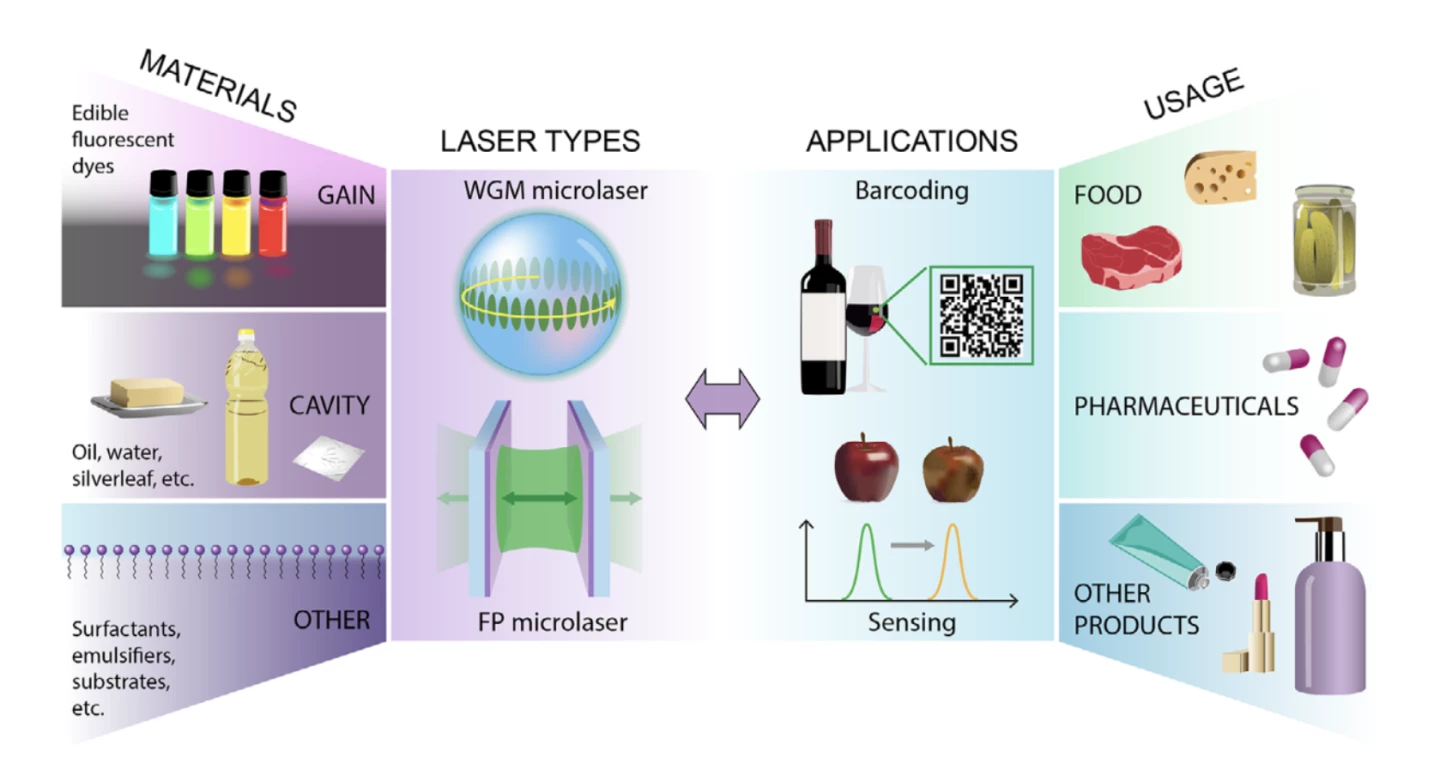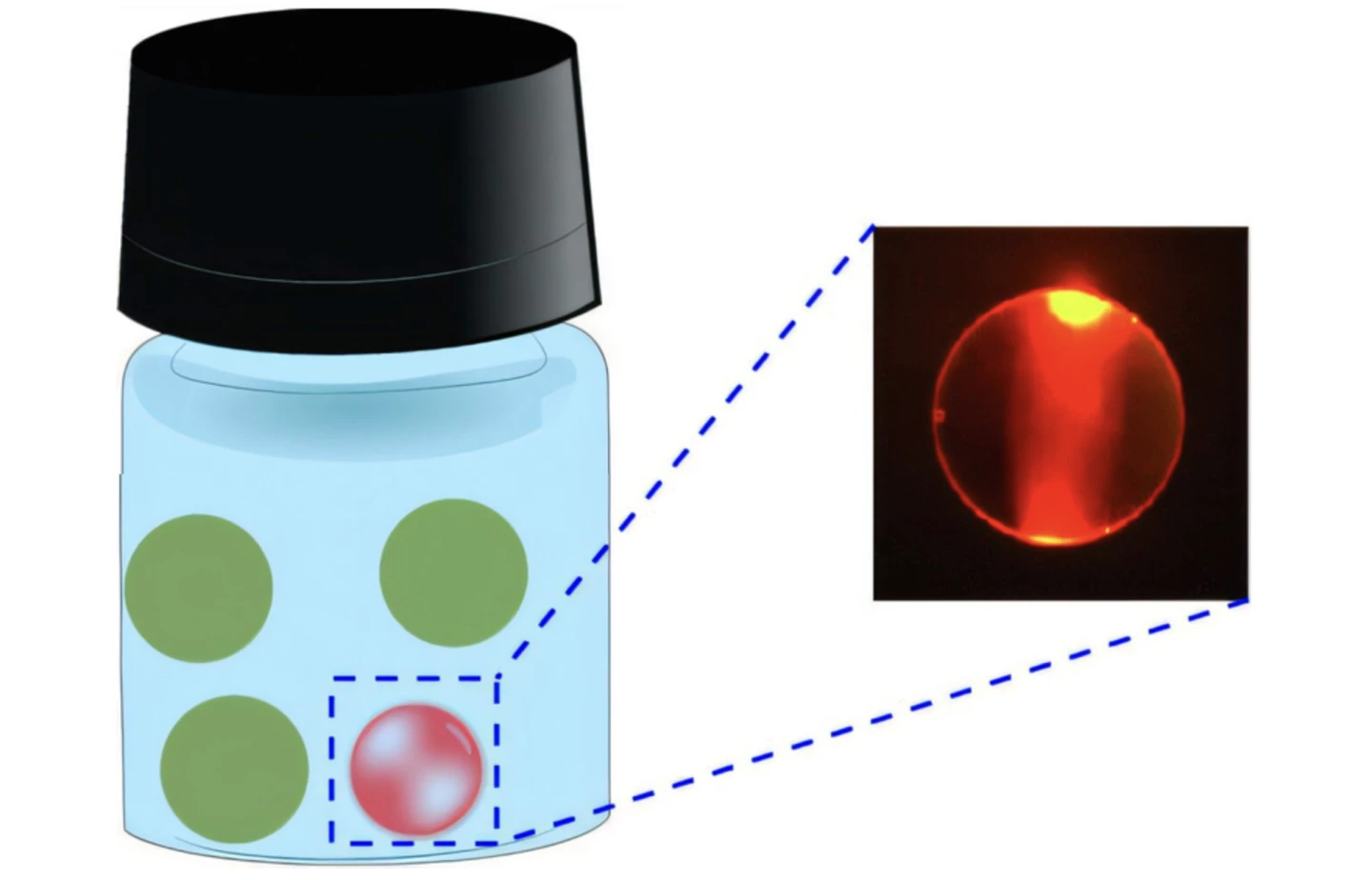Scientists have reimagined the meaning of a “light meal,” creating microlasers that use natural products to emit illuminated beams through food. And they’re completely edible. These mini lights, the first demonstration of laser emission from an entirely edible system, could be harnessed for everything from environmental sensors to food safety trackers and bio-barcodes.
Scientists from Slovenia’s Jožef Stefan Institute have successfully created “edible microlasers,” which are exactly what they sound like – tiny optical devices, smaller than a grain of sand, that emit a beam of coherent light like normal lasers. And they’re made out of biocompatible and digestible materials like gelatin, sugar and dyes, including additives already approved by the Food and Drug Administration (FDA), meaning they’re perfectly safe to ingest.
Why, you may ask? Because they’re tiny and safe to eat, with fluorescent compounds such as chlorophyll (from olive oil) and riboflavin (vitamin B2), they could be widely applicable for use in food safety to track supply chain data, detect temperature changes and spoilage, prevent counterfeit goods or even act as QR or bar codes.
To demonstrate the concept, the scientists encoded a date into a peach compote, using a microlaser “barcode” in the condiment. The barcode remained optically stable and readable for more than a year. The team also used the microlasers to respond to changes in the product – pH levels, temperature, sugar concentration – which could have real-world food safety applications.

Abdur Rehman Anwar, Maruša Mur, Matjaž Humar/Jožef Stefan Institute
“Due to their extremely narrow spectral lines, the microlasers provide exceptional sensitivity to various environmental factors,” the researchers wrote. “They are designed to sense sugar concentration, pH, the growth of bacteria, and exposure to too-high temperatures. Additionally, they encode multiple data bits, such as manufacturer information and expiration dates, while also functioning as physical unclonable functions for anti-counterfeiting.”
According to the researchers, these microlasers are built from a combination of materials – fluorescent food dyes, gelatin, natural oils and sugars, and edible surfactants and thickeners, like xanthan gum and lecithin. Starting with a sugary solution, the researchers manipulate this to form spherical droplets like tiny jellies. These droplets are dosed with edible fluorescent molecules that glow under light. When the droplet is hit with a pulsed laser (used as a pump), it amplifies light via resonance, then emits a laser beam. The shape of the droplet also allows for specific light manipulation.
The shape of the droplets primarily demonstrate whispering-gallery mode light emission, where the light travels around a concave surface, bouncing along the inside surface. In the case of these microlasers, as the light travels around the inside of the droplet’s edges, it reflects and amplifies with each loop. When pumped with enough energy, the sphere will emit the laser light on its own. They also demonstrated a Fabry–Pérot laser, which is a simpler setup featuring two parallel “mirrors” with a space in between.
“We demonstrated two types, whispering-gallery mode (WGM) and Fabry–Pérot (FP) microlasers,” explained the researchers. “The microlasers are pumped with an external light source, such as a pulsed laser. When the optical gain in the cavity exceeds the optical losses, the system reaches the lasing threshold, emitting laser light. Here, we used only edible substances for both the gain medium and the cavity, either naturally occurring in food or approved food additives, without any chemical alterations.”

Abdur Rehman Anwar, Maruša Mur, Matjaž Humar/Jožef Stefan Institute
The droplets formed were typically around 10–100 micrometers in diameter, so about the size of a grain of pollen. And while they required external light to be triggered, the coherent laser beam emitted could flash like conventional microlasers. Their lifespan depends on their environment; dry conditions are optimal, as they can degrade more rapidly in moist or humid conditions depending on how well the gel can withstand water. In the study, the researchers had one laser persevere for around 48 hours under controlled humidity settings.
While these microlasers won’t replace LEDs or high-powered devices anytime soon, they do open the door to the development of biocompatible and sustainable technologies that are safe for humans, animals and the environment.
“The microlasers developed int his study are entirely safe for consumption, do not alter the appearance or taste of food, and are environmentally friendly,” the researchers noted. “Unlike traditional barcodes and sensors placed on the packaging, edible lasers can be embedded directly into edible products. They can significantly enhance traceability, security, and freshness monitoring of food and pharmaceuticals as well as non-edible products and can be employed for environmental monitoring and biomedical applications.”
The study was published in the journal Advanced Optical Materials.
Source: Jožef Stefan Institute via Optics.org








